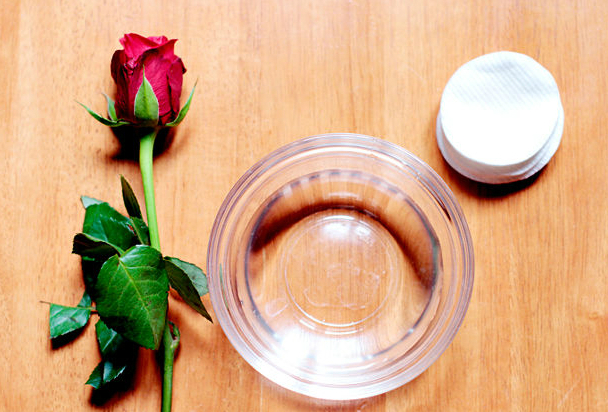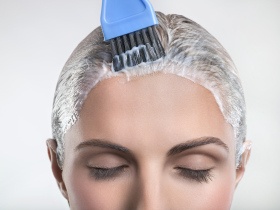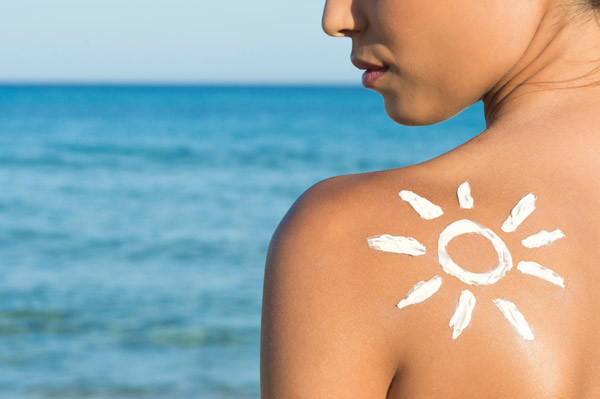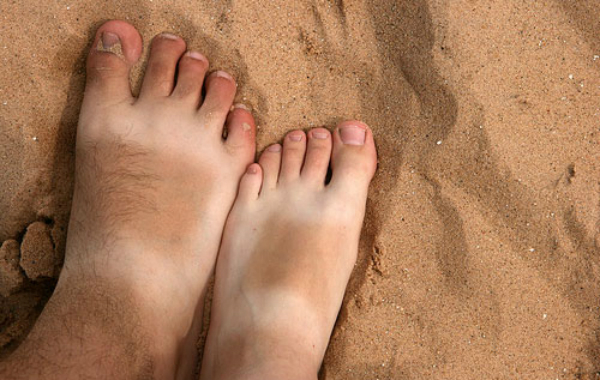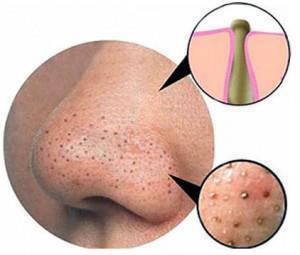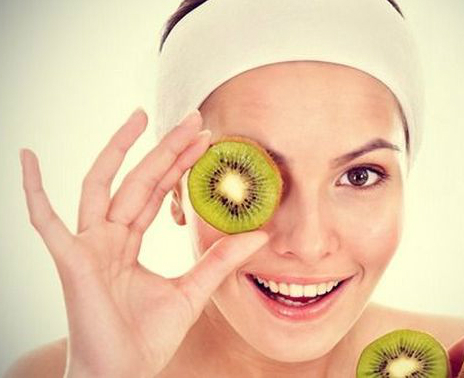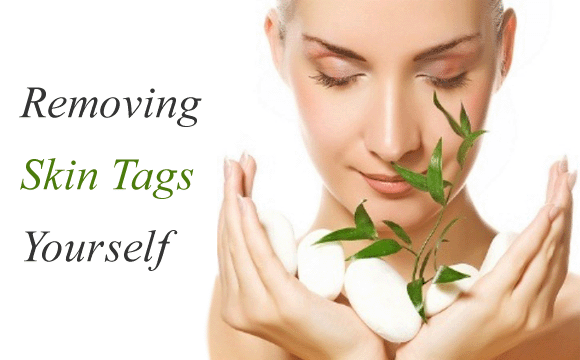
The scientific name of skin tags is achrochordon, the other names of skin tags are cutaneous papilloma or cutaneous tag, fibro epithelial polyp, fibroma molluscum or fibroma pendulum, papilloma colli, soft fibroma, and Templeton skin tag, and these are benign, non-cancerous skin growths that look like a small piece of soft, hanging skin. However this growth is harmless.
These skin tags can be seen on any part of the body, generally caused in the places where there is rapid rubbing of skin with skin, some common places where skin tags generally occur are Eyelids, Axillae (armpits), Lower portion of breasts, Groin, Upper chest portion and neck. Their appearance is different, commonly irregular in shape, brownish fleshy color hanging from the skin. The size varies from 2.5mm diameter to larger size, sometimes they may grow up to size of a grape approximately 5cm diameter. They are composed of nerve cells, fat cells, core of ducts and fibers, covered with epidermis.
Skin tags are commonly caused in the people who are suffering from obesity or overweight, diabetes and women who are pregnant. Sometimes heredity will also be a reason for skin tags. These skin tags equally affect males and females.
Causes of skin tags:
These skin tags commonly affect middle age people. Bunches of collagen and blood vessels that are trapped inside thicker bits of skin are responsible for the cause of skin tags.
When skin is rubbed with skin, which generally occurs in places of body like folds, armpits etc, there are chances of skin tags to appear.
Increasing the likelihood of developing a condition or disease is called a risk factor. Probably more skin folds and creases happen in the people who are obsessed and of overweight which causes achrochordon. Hormones that are secreted in the pregnant women are also a cause for skin tags. People suffering with diabetes are also susceptible to skin tags. Usage of steroids causes the collagen fibers in the skin to bond which forms skin tags on the body skin.
A study in the National Institutes of health, USA proves that nearby 46 percent people are suffering from skin tags, which is mostly due to heredity
Skin Tags Symptoms:
The most common symptom of skin tags is skin growth. The growth is generally very small in diameter, sometimes it may vary up to 5cm in diameter in a worst case.
Skin tag sometimes have a narrow stalk (peduncle), commonly occurred in folds and creases, like armpits, lower portion of breasts in women, upper chest part, groins etc. They are smooth to appear, fleshy brownish in color and irregular shape. They mostly form in groups on the skin which can be stuck when shaving, rubbed by a cloth or by jewelry.
The article further throws you useful information on the home remedies to remove skin tags. Various surveys and researches have shown skin tags as genial and vary in cases which are non-threatening which can be removed or treated being seated back home.
Before applying these it is always advised to check for the skin tendency in terms of the color changes that the tags are growing. In case they appear mild then the suggestible treatments would be:
Though painful, trying a duct tape or hail polish over a skin tag is a good treatment. Some of the herbal treatments for skin tags, the advantage of it is they are less invasive and disadvantage is that they take a little more time for them to work.
Tea Trea Oil
Tea tree oil helps you control and cure many skin disorders, including skin tags and moles. In order to use this sure, firstly clean the skin tag and take a cotton ball soaked in water, add 3 drops of tea tree oil to the soaked cotton ball now apply it directly to the skin tag in circular motions. Repeat this 1-2 times daily for a week or 10 days until the lesion vanishes.
Castor Oil
Castor oil can be used both internally and externally. It can be used as an external ointment by mixing it with a little baking soda to create a paste. You can also add some citrus oil to the paste as it will be very stinky. Apply this paste on the affected area and use a band aid to cover it. Repeat this for 2 – 4 weeks or until the skin tag disappears.
Apple Cider Vinegar
Apple cider vinegar is very effective in removing skin tags. Apply a small dab of vinegar on cotton ball or a q-tip and apply it on the skin tag. After application, it causes a stinging sensation for a few minutes. Use it for two to four weeks for the skin tags to vanish
Lemon Juice
Lemon juice contains citric acid, which helps you in decomposing off the cells in the skin tags. Dab some lemon juice onto a cotton ball and apply it directly on the skin tag. Leave it on the affected area till it dries. You will notice some changes in the skin tags after a applying it for few days and in due course the skin tag will dry out and vanish.
Banana Peel
Banana peel is a good remedy for skin tags. To use it cut the banana peel into small pieces. Put the peel on the affected area and hold it securely with a bandage. Take care that the inside of the peel comes in contact with the affected skin area. Let it rest overnight and repeat this process daily until the skin tag falls off.
Dental Floss
Another method to get rid of skin tags. It can be used on any body part. In order to use this dental floss, tie a knot tightly around the base of the skin tag close to your body. After a period of 2 – 3 weeks the skin tags will become smaller and will disappear in due course. This helps in killing the skin tag by blocking blood flow temporarily to the affected area.
Onion Juice
Slice onion into small pieces and soak it in a container with salt overnight. Now extract juice from this soaked mixture. In the evening, apply this onion juice on the affected area or skin tag and cover it. Leave it overnight and rinse if off in the morning with warm water. Continue this process every night for a week.
Pineapple Juice
Pineapple is a good remedy to get rid of skin tags. Apply the pineapple juice on the affected area for twice or thrice each day for 7 to 10 days without rinsing it off, this makes the skin tag to fade away.
Garlic
Apply some crushed garlic juice onto the affected area and cover it with a band. Take care that you change the band and the garlic juice at least thrice a day.
Aloe Vera Gel
Aloevera is good for any skin condition. Massage it onto your skin daily. Apply the aloevera juice directly on the skin tag. Because of its ability to health any kind of skin disorders so it is used as a main in gradient in many skin care products
Compressed Air
In cryotherapy, the lesion is frozen off. Compressed air in a tin also has a same effect as that of cryotherapy. After 1 – 2 applications of compressed air the skin tag will change its color and will fade off eventually.
This method has downside too, as it may result in freezing. This damages the surrounding tissues and results in the breakage of the cells.
Nail Polish
Cover the lesion completely with nail polish and leave it on until it gets dry. Repeating the same procedure for 2 – 3 times using fresh paint daily will make the tag fade off in due course.
Duct Tape
Duct tape applied on the skin tag for 7 days will help the skin tag to drop off while removing the tape. This method is usually used in mole removal, and is an effective natural home remedy for removal of warts.
Vitamin E
A best treatment for removing skin tags. You need to rub the vitamin on to the lesion two times a day. This will help you remove the skin tags in 1 – 2 weeks. Combine vitamin E with garlic and let it rest overnight for better results.
Ginger
Rub slices of raw ginger on the affected area for around 2 weeks and the skin tag is supposed to fall off eventually.
Fenugreek Seeds
Fenugreek is an amazing herb that contains powerful antioxidants. The efficacy of fenugreek seeds helps in skin tag removal. Soak fenugreek seeds overnight in water and drink this water in the morning before having breakfast. Or even you can chew soaked seeds. This herb also helps you in avoiding anemia or thyroid conditions, but do not consume more than 100 g each day.
Nail Clippers
You can remove skin tags with scissors or nail clippers, but it may cause bleeding and infection, so sterilize the clippers and surrounding area of the skin tag with isopropyl. Now make the skin numb with an ice cube. Pull the skin tag away and cut it with clippers.
Now press it firmly with a sterilized gauze pad until bleeding ceases. Once the bleeding stops, apply an antibiotic.
These are some of the herbal treatments, which help you in getting rid of skin tags. Have patience for a couple of weeks so that you can naturally treat the skin tags with simple home remedies.
Source: health digezt


